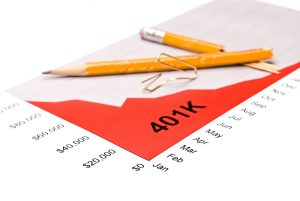When it comes to planning for those golden years, understanding the full retirement age chart is pivotal. This chart, seemingly complex at first glance, is your compass in navigating the retirement maze. But what is this chart really about, and how can it help you ensure a seamless transition to retirement? Buckle up, and let’s dive right in.
Contents
- 1 Understanding the Basics
- 2 A Glimpse into History
- 3 The Chart Unveiled
- 4 Why Does This Matter?
- 5 Claiming Before the FRA
- 6 Claiming After the FRA
- 7 Decoding Early Retirement
- 8 What Is The Best Age To Retire?
- 9 Seeking Expert Guidance
- 10 FAQs
- 10.1 Q: What is the Full Retirement Age for someone born in 1970?
- 10.2 Q: How much will my benefits reduce if I claim at 62 and my FRA is 67?
- 10.3 Q: Is it possible to claim benefits after the age of 70?
- 10.4 Q: Does my birth month affect the FRA?
- 10.5 Q: Can I work and claim benefits before reaching the FRA?
Understanding the Basics
Ah, the concept of the Full Retirement Age (FRA) – it sounds straightforward, but there’s a little more beneath the surface, isn’t there? Think of the FRA as a threshold. Once you cross it, you’re in the promised land of full Social Security retirement benefits.
But here’s where the wrinkle comes in. You’d think, historically speaking, 65 would be the universal age marker. It’s that age we often see in movies, where characters throw in their work hats, ready to embrace the golden years. But just as your favorite character discovers a hidden secret halfway through the film, the rules around FRA have had some plot twists of their own.
The reality is, the age metric isn’t static. It evolves. As people live longer, healthier lives, and as economic conditions shift, the goalpost for the FRA moves. It’s a bit like how sequels to classic movies sometimes adjust the storyline based on changing societal norms.
So, while once upon a time, 65 might have been the golden number, now the FRA is a sliding scale based on when you were born. The twist? It’s all about ensuring the sustainability of the Social Security system for everyone. So, no, it’s not as simple as hitting 65 and immediately rolling in the benefits. There’s a bit of fine print to navigate, and that’s where understanding the nitty-gritty really matters.
A Glimpse into History
Let’s hop into our metaphorical time machine and journey back to the origins of the Full Retirement Age. Picture it: The 1930s, when the Social Security Act was first signed into law. The world was a different place, vinyl records were the iPods of the day, and 65 was the coveted age at which folks could retire and collect their full Social Security benefits. It was the age recognized universally, much like the roar of a classic car engine or the melodies of the golden age of radio.
But as the decades rolled on, something fascinating started happening. Thanks to medical advancements, healthier lifestyles, and societal progress, people began living longer. Imagine this shift as a classic car receiving modern upgrades—better tires, improved engine, maybe even a shiny new paint job. Just as that car’s value and longevity increased, so did human life expectancy.
Seeing this “upgraded model” of human life, lawmakers realized they had to recalibrate. The Social Security system, after all, was designed with certain life expectancies in mind. It had to ensure that it remained robust, effective, and fair for all beneficiaries. So, as life expectancy rose, the FRA naturally had to adjust alongside it, just as you’d update the parts of a classic car to keep it running smoothly in modern times.
That’s why today, the age 65 isn’t the universal ‘switch’ to retirement mode. Instead, it varies based on your birth year, ensuring that the system remains balanced and functional. In essence, while we may yearn for the simplicity and nostalgia of the past, some updates—like those in the retirement age chart—are not only beneficial but absolutely necessary to keep pace with our ever-evolving world.
The Chart Unveiled
Here’s a brief rundown based on your birth year:
| Birth Year | Full Retirement Age |
|---|---|
| 1937 or earlier | 65 |
| 1938 | 65 and 2 months |
| 1939 | 65 and 4 months |
| 1940 | 65 and 6 months |
| 1941 | 65 and 8 months |
| 1942 | 65 and 10 months |
| 1943-1954 | 66 |
| 1955 | 66 and 2 months |
| 1956 | 66 and 4 months |
| 1957 | 66 and 6 months |
| 1958 | 66 and 8 months |
| 1959 | 66 and 10 months |
| 1960 and later | 67 |
Surprised? It’s a lot to take in, isn’t it?
Why Does This Matter?
Understanding your Full Retirement Age (FRA) isn’t just about marking a date on the calendar; it’s about strategic financial planning. Consider it like the main ingredient in a recipe – get it wrong, and the whole dish might fall apart. Claiming your benefits before your FRA? You risk reducing the monthly Social Security benefits you’ll receive for the rest of your life. It’s akin to baking a cake without letting it rise fully; it’ll still be good, but not at its peak.
Conversely, if you have the patience and ability to delay drawing on your benefits until after your FRA, you’re in for a treat! Much like letting a wine age to perfection, your monthly benefits could grow, offering you a more flavorful (and financially secure) retirement. So, while the prospect of immediate returns can be tempting, waiting might just add that extra topping on your retirement sundae.
It all boils down to one thing: knowing your FRA allows you to make informed decisions, maximizing your benefits and ensuring that when you retire, you do so on your terms. Just as a master chef knows the precise moment to take the roast out of the oven, you’ll know the optimal time to claim your benefits.
Claiming Before the FRA
Have you ever been tempted to slice into a pie that’s just not quite done baking? The aroma fills the room, your stomach grumbles, and the anticipation builds. But, as you know, indulging too soon might mean you’re left with a less than satisfying treat. Such is the case when claiming your retirement benefits ahead of the Full Retirement Age (FRA).
Going for those Social Security benefits before your designated FRA is much like cutting into that undercooked pie. The exterior might look appealing, and the promise of immediate satisfaction is hard to resist. But once you do, the realization sets in – it’s just not as rich or fulfilling as it could’ve been. Instead of a full, flaky crust and a perfectly set filling, you’re left with something a tad gooey in the center.
By drawing out benefits early, you’re essentially trading the immediate satisfaction of financial support for a potentially significant slice of reduced benefits. For many, this could translate to a decrease of around 6.7% for each year they jump the gun before the FRA. Over time, these reductions can add up, and like that hurried pie slice, the decision can leave a lingering taste of what might have been. So, before making that pivotal choice, ask yourself: is the immediate reward worth the long-term sacrifice?
Claiming After the FRA
Let’s journey into the world of fine wines for a moment. Just as a robust red or a delicate white benefits from a bit of patience, allowing it to age gracefully in a dimly lit cellar, your Social Security benefits can also flourish with time. Just as wine enthusiasts know that certain vintages become richer, more complex, and far more rewarding with age, the same logic can be applied to retirement benefits.
When you hold off on tapping into those benefits post your Full Retirement Age, you’re essentially letting your ‘financial wine’ mature. Every year you delay, up to the age of 70, the value of your benefits increases, much like the depth and character of a wine intensifying over time. Specifically, for many, this boost equates to an impressive 8% annual hike.
So, envision yourself in a grand vineyard. Every year you wait, another layer of complexity, another note of richness is added to your bottle of wine – or in this case, your retirement benefits. By the time you uncork that bottle at age 70, what you have in your glass is far more fulfilling and satisfying than had you been hasty.
In the grand scheme of life’s financial vineyard, the decision to delay might just lead to sipping on a more luxurious and rewarding retirement experience. Cheers to waiting for the good stuff!
Decoding Early Retirement
Ah, the allure of early retirement! Imagine lounging by the beach, sipping on your favorite drink, or perhaps picking up that hobby you’ve always wanted to master, all while your former colleagues are still grinding it out at the office. Tempting, isn’t it? But, much like choosing to binge-watch your favorite series on a weeknight, there’s a price to pay the next morning.
When you consider early retirement, you’re not just looking at the immediate joy of freedom; you’re also facing the intricate tapestry of financial implications. Think of it like a puzzle – fun on the surface, but requiring attention and strategy.
Firstly, diving into retirement before reaching your Full Retirement Age means tapping into your savings earlier, potentially reducing their longevity. It’s like using up the battery of your torch before a long night; you might find yourself in the dark sooner than expected. Then there’s the matter of reduced Social Security benefits. Just as a cake pulled out of the oven too soon might sink, claiming benefits prematurely could mean receiving a significantly smaller slice of the financial pie.
However, it’s not all about the money. Early retirement also offers intangibles: more leisure time, the chance to travel, or the opportunity to chase passion projects. It’s akin to choosing a rustic countryside vacation over a flashy city break. One isn’t necessarily better than the other; it’s about what aligns with your soul.
In the end, when deciphering the code of early retirement, balance your financial security with personal desires. Like any major life choice, it’s about understanding the trade-offs and ensuring they resonate with your vision for the future. So, ready to piece that puzzle together?
What Is The Best Age To Retire?
The optimal age to retire varies greatly based on individual preferences, financial circumstances, health conditions, and life goals. Traditional benchmarks often center around ages set by social security or pension plans, typically falling between 62 and 70 in many countries. Retiring at an earlier age might offer individuals more leisure time and the opportunity to pursue personal passions, hobbies, or even second careers.
However, it also means a longer period during which one’s savings must last, potentially increasing the risk of outliving one’s funds. Retiring later can help maximize pension and Social Security benefits, allow more time to save money, and provide additional years of purpose and structure through work. For some, the later retirement age also corresponds with a sense of identity and fulfillment derived from their careers.
Yet, the best age to retire isn’t solely a financial decision. Quality of life, health, family considerations, and personal ambitions play a substantial role in this pivotal life choice. Some individuals may have dreams of traveling extensively in their retirement and feel that doing so at a younger age when health is more robust is paramount.
Others might have familial obligations or simply cherish their work-life and opt for a delayed or partial retirement. Moreover, with increasing life expectancies and evolving perceptions of aging, many now view retirement as a fluid phase of life, where work and leisure can coexist in balance. Thus, the best age to retire is profoundly personal and should align with an individual’s unique life situation and aspirations.
Seeking Expert Guidance
Navigating the complexities of retirement, especially the intricate details of the Full Retirement Age Chart, can often feel like venturing into a dense, unfamiliar forest. The paths are winding, the signs sometimes unclear, and the terrain, unpredictable. And just as you wouldn’t hike a challenging trail without a reliable map or a seasoned guide, deciphering the labyrinth of retirement planning often calls for some expert help.
Enter the financial advisor, your compass in this vast financial wilderness. Think of them as the seasoned hiker who’s treaded these paths numerous times before. They’ve seen the pitfalls, know the shortcuts, and most importantly, can guide you based on your pace, stamina, and end goals.
Why is their guidance invaluable? Well, retirement isn’t just about knowing the age you can officially retire; it’s about syncing this milestone with other financial instruments, investments, savings, and life goals. It’s about understanding how the tapestry of your life—your dreams of traveling the world, buying that beach house, or even just ensuring a comfortable, peaceful life—fits into the bigger picture of financial planning.
Furthermore, while the basics of the Full Retirement Age might seem straightforward, the nuances, exceptions, and external factors influencing it can be as complex as the hidden layers of a grand symphony. And just as you’d trust a maestro to decode a musical masterpiece, a financial advisor brings clarity, foresight, and strategy to your retirement tune.
In essence, embarking on the journey of retirement without seeking expert guidance might leave you lost, or worse, stuck in financial quicksand. With a trusted advisor by your side, however, you’re better equipped to traverse the retirement landscape with confidence, ensuring your golden years are just that – truly golden.
Conclusion on Full Retirement Age Chart
Navigating the full retirement age chart is crucial in carving out a sound retirement strategy. By understanding the nuances of this chart, you’re not just prepping for retirement; you’re empowering yourself to make informed decisions, ensuring those twilight years are as golden as they should be.
FAQs
Q: What is the Full Retirement Age for someone born in 1970?
For individuals born in 1970, the Full Retirement Age is 67.
Q: How much will my benefits reduce if I claim at 62 and my FRA is 67?
If your FRA is 67 and you claim at 62, your benefits will reduce by about 30%.
Q: Is it possible to claim benefits after the age of 70?
Yes, but there’s no added advantage in delaying past 70 as benefits do not increase after this age.
Q: Does my birth month affect the FRA?
Yes, the month you were born can influence the exact age and month for your FRA, especially if you were born on the cusp of a changing FRA.
Q: Can I work and claim benefits before reaching the FRA?
Yes, but your benefits might be reduced based on your earnings. Once you hit the FRA, these reductions cease, and you can earn unlimited amounts without affecting your Social Security benefits.






































